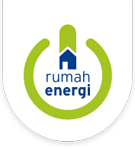Webinar: The Importance of Soil Health to Support Agricultural Productivity and Ecosystem Sustainability
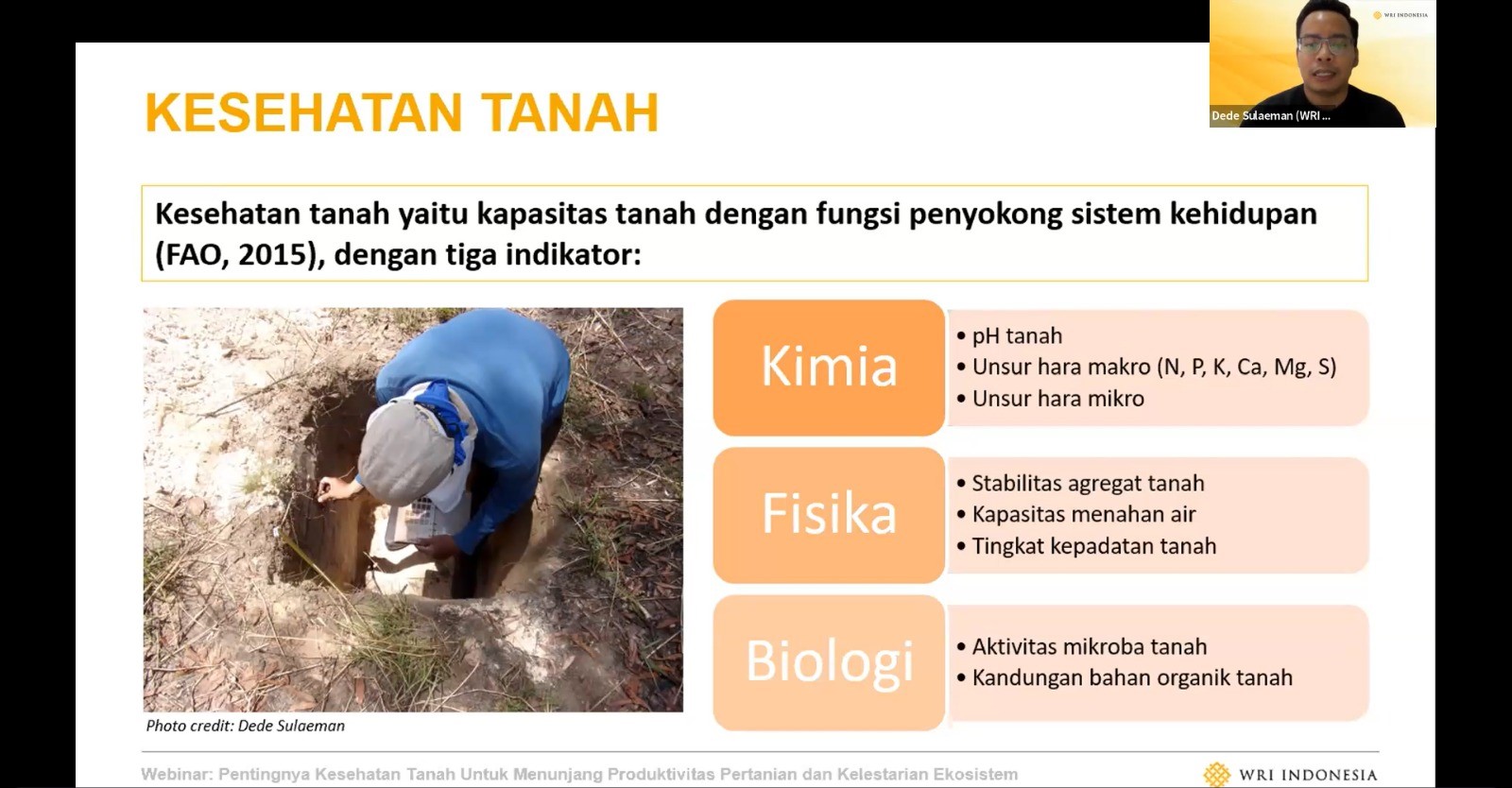
Jakarta – The webinar activity entitled “The Importance of Soil Health to Support Agricultural Productivity and Ecosystem Conservation” organized by the Rumah Energi Foundation (YRE) and the Partnership for Indonesia’s Sustainable Agriculture (PISAgro) was held online on Tuesday (16/05).
This webinar was carried out to increase public awareness about the importance of soil health, sharing good practices from practitioners, and opening opportunities for sustainable collaboration to support agriculture based on ecosystem sustainability. The webinar activity was guided by Sandra Pratiwi (Strategic Engagement – PISAgro) as the event moderator. The event opened with a survey session using slido.com to find out the participants’ insights regarding soil health problems and the impact of climate change on soil quality and health. This short survey also became the initial basis for resource persons in providing presentations and question-and-answer discussions with participants.
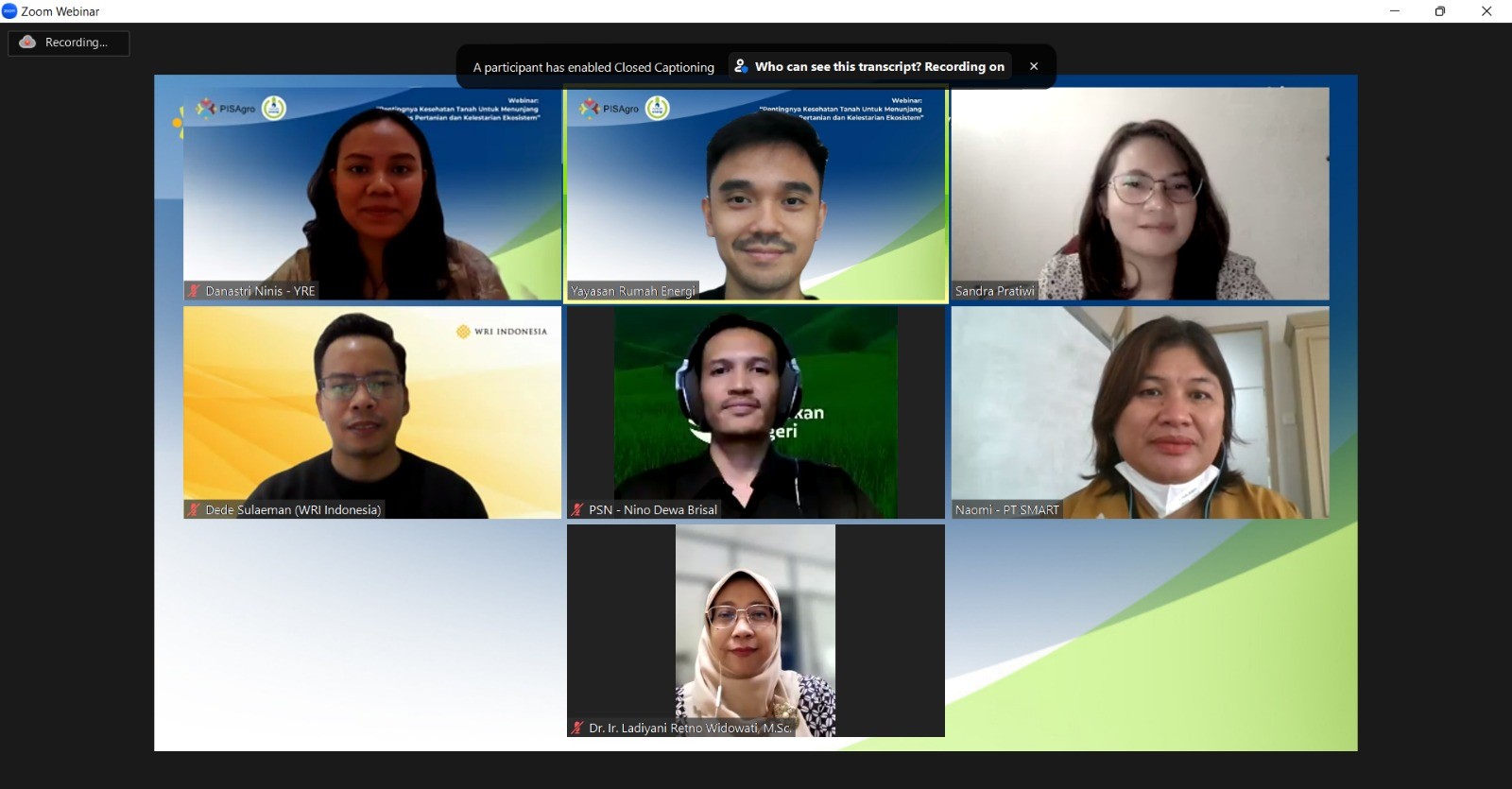
Dede Sulaeman (Research Lead for Peatland – WRI Indonesia) as the guest speaker gave a presentation on the Impact of Climate Change on Soil Health. In his presentation, Dede revealed that an increase in temperature resulted in a decrease in soil organic matter content, reduced soil moisture, and reduced soil structure. Then, increased rainfall due to climate change also causes nutrient leaching, reduces soil organic matter content, and soil erosion. According to him, climate change is not only causing an increase in rainfall but also decreasing rainfall which has an impact on soil salination and reduces the availability of nutrients.
The next resource person Dr.Ir Ladiyani Retno Widowati, MSc (Head of the Soil and Fertilizer Instrument Standard Testing Center) of the Ministry of Agriculture explained about the Health Conditions of Soil in Indonesia. In his presentation, he said that since 1930-2010 in Indonesia, especially in Java Island, the organic C content was decreasing. From 2011-2019, the use of organic matter was low resulting in an intensive weathering process, high temperatures, and rainfall, and changes in land use also worsened soil conditions. The most easily observed/measured soil health parameters are soil color, soil fauna, microbial activity, soil fauna, and microbial respiration. Ms. Retno also revealed that there are various ways to maintain and restore soil health.
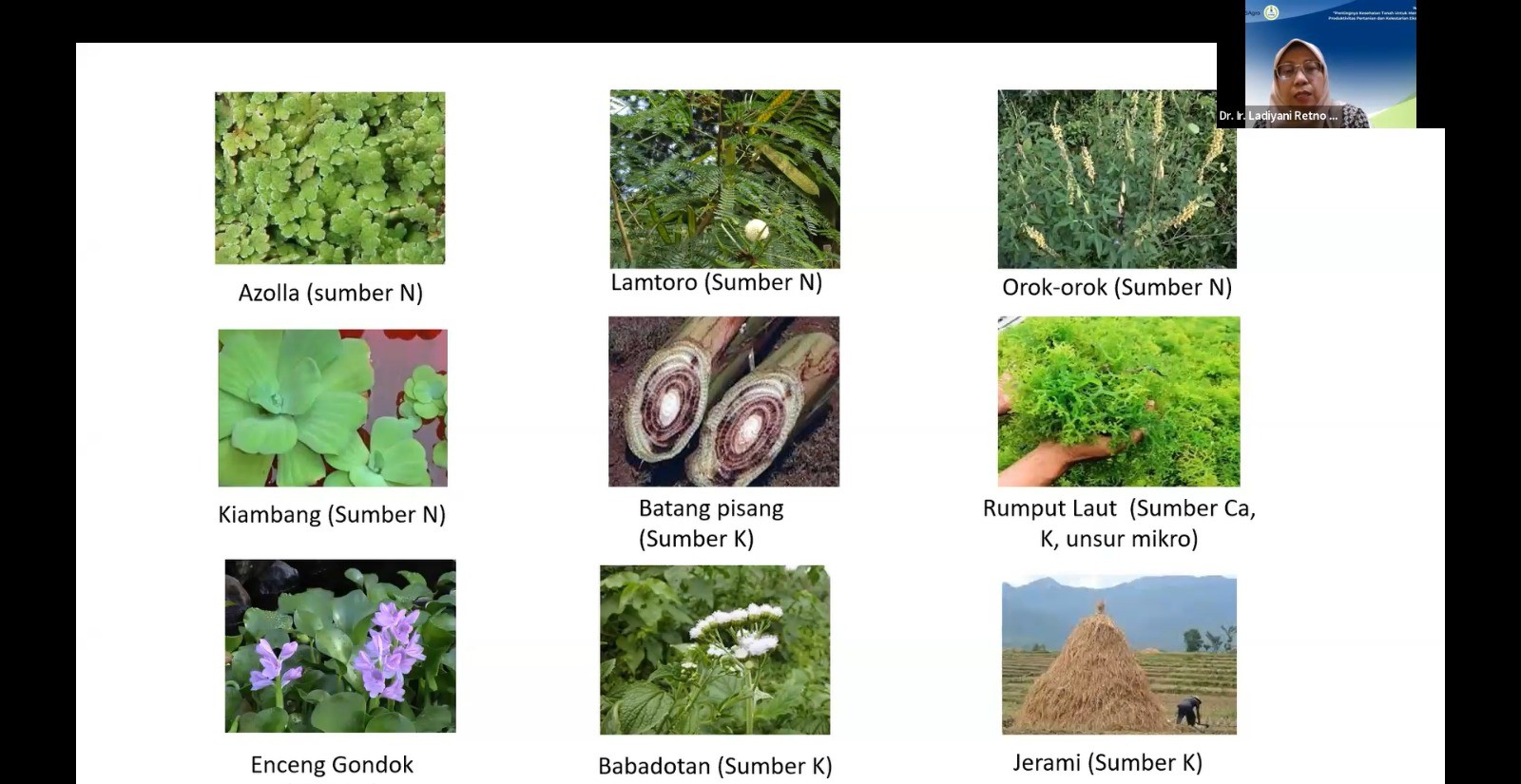
“Technical efforts to maintain and restore soil health can be carried out in the following ways, namely soil C-organic recapitulation, returning straw to the soil, adding appropriate soil amendments, fertilizing with organic fertilizers, balanced fertilization (soil enhancers – organic fertilizers – inorganic fertilizers) – biological fertilizers), rotational planting, use of alsin according to land area and leveling or terracing, saving water, and not using excessive herbicides and pesticides.”
The third presentation was by Mrs. Naomi Distrina Ginting (Alternative Livelihood Officer – PT SMART) about Regenerative Agriculture. He explained that the regenerative farming program is a system that uses the Integrated Ecological Agriculture (PET) approach by using techniques for improving agricultural land including improving agricultural systems including repairs for various types of crop commodities (horticulture), livestock, and fisheries so that there is an increase without polluting the environment. According to him, the challenges of PET are the socio-cultural/mindset of the people who are not used to implementing intensive patterns, slow responses, the community’s time management is not on target, and large capital due to land clearing tends to use heavy equipment. He added the solution to this problem included taking a field school and learning garden approach, broadening the horizons of thinking about managing their land, and helping to open community garden land with the company’s heavy equipment.
The last presentation session was conducted by Nino Dewa Brisal (Business Development PT Pupuk Suburkan Negeri). Nino explained that the use of organic fertilizers is one of the implementations of the circular economy concept. At present, not all organic fertilizer processing is following the circular economy concept, the ideal organic fertilizer processing for the key elements of the circular economy is the processing of livestock manure which is processed through a biodigester. Biru Slurry is an organic fertilizer product of PT Pupuk Suburkan Negeri, which is the residue resulting from the anaerobic biogas fermentation process in a biodigester. The benefits of using Blue Slurry are as a soil conditioner with complete and high-quality nutrition, bio-activators which are a food source for earthworms, and phytohormones for plant growth that can function as organic pesticides and fungicides. Nino also added the advantages of Blue Slurry include having ingredients that are important for soil health which is slowly releasing (nutrients are released slowly over time so that the soil is stable), including a C-organic 15.18%, C/N Ratio of 14.05%, PH 8.45%, Nitrogen 1.08%, P2O5 5.03% K2O 0.44%, available Fe 5.40ppm and Zn 314.18ppm. Other ingredients in Blue Slurry are Amino Acids, Humic Acids, Fatty Acids, Antibiotics, Vitamin B12, Organic Acids, Auxins, and Cytokinins.
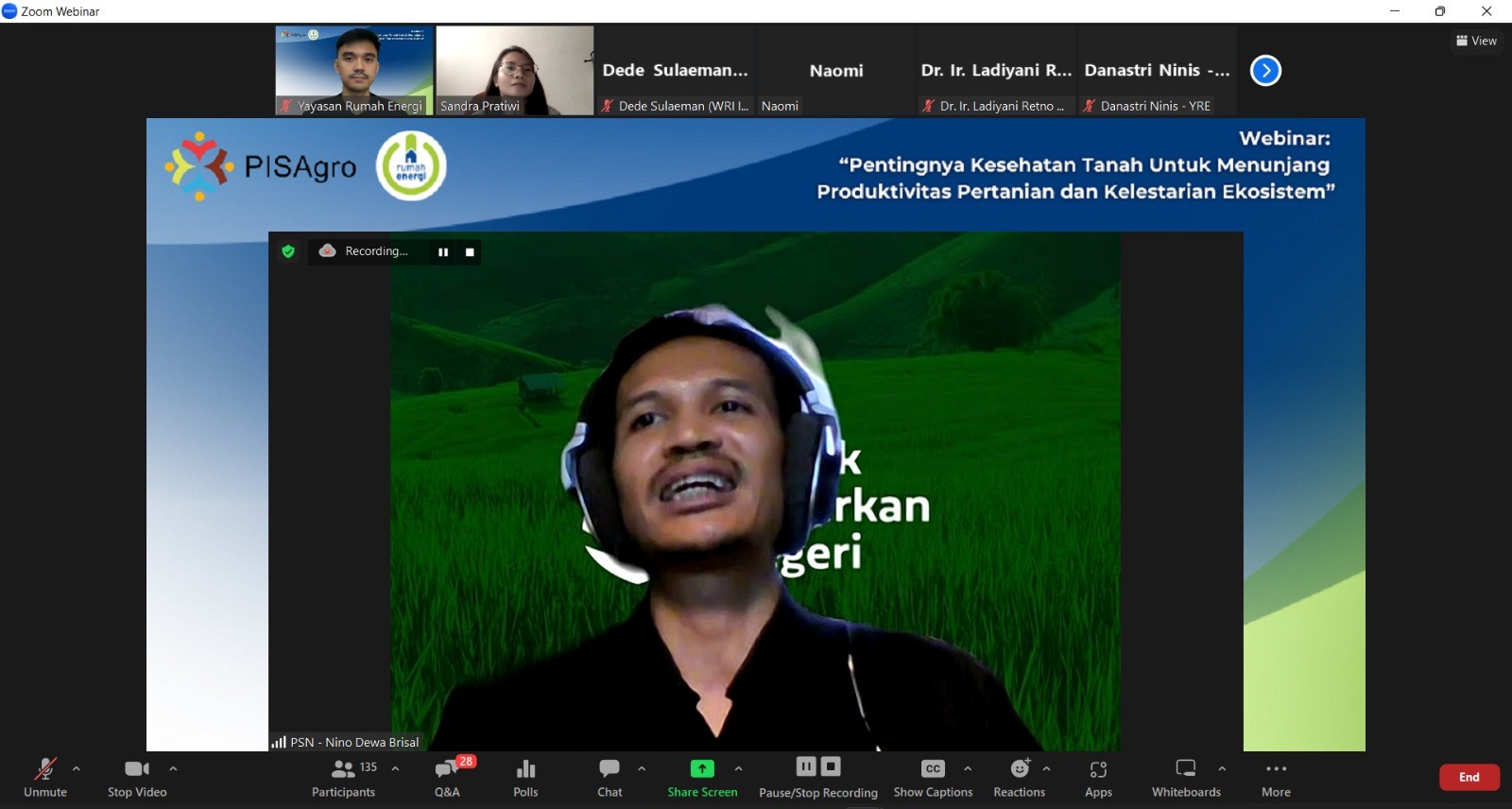
“By applying Biru Slurry the soil is looser, the soil retains water longer, the soil is more nutritious, and the activity of worms and probiotics increases. Healthy soil can stabilize ecosystems, plants become healthy so humans are healthy too.” Nino said, “The application of Blue Slurry also increases the average profit, which can reach 54.46% per ha.” he added.
After the presentation session, a second survey session was carried out. This session is a continuation of the previous survey to find out the participants’ insights, especially in the implementation and experience of using fertilizers. Furthermore, the question-and-answer discussion session with the participants was carried out in two ways, namely by asking directly and through the Q&A feature. On this occasion, the participants interactively gave their questions which were then answered or responded to by the webinar resource person. Several questions written through the Q&A chat box were also sorted by the moderator and responded to responsively by the resource person.
